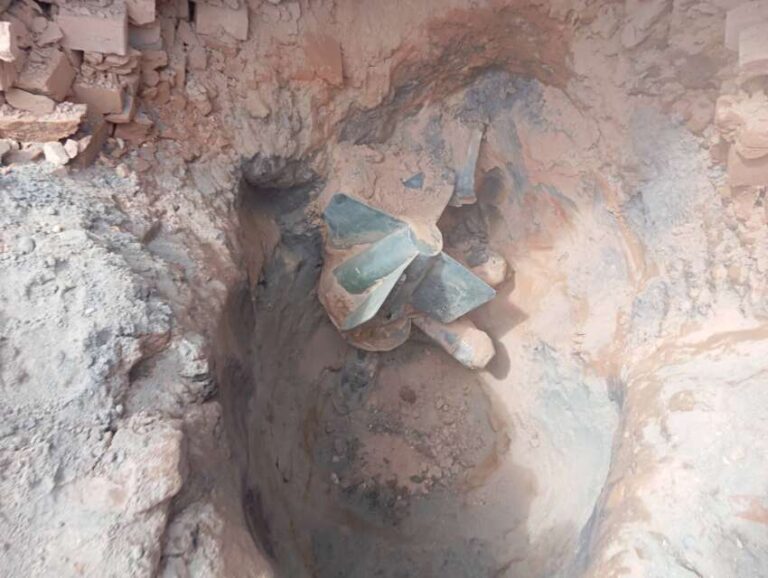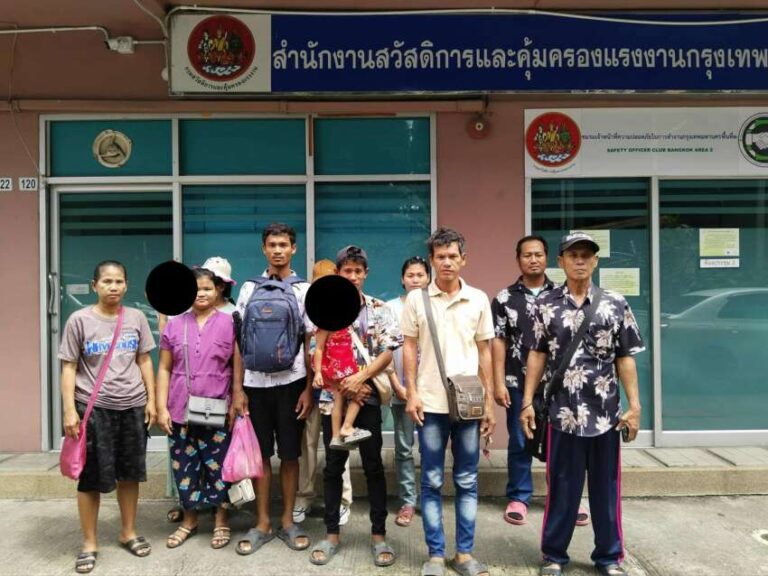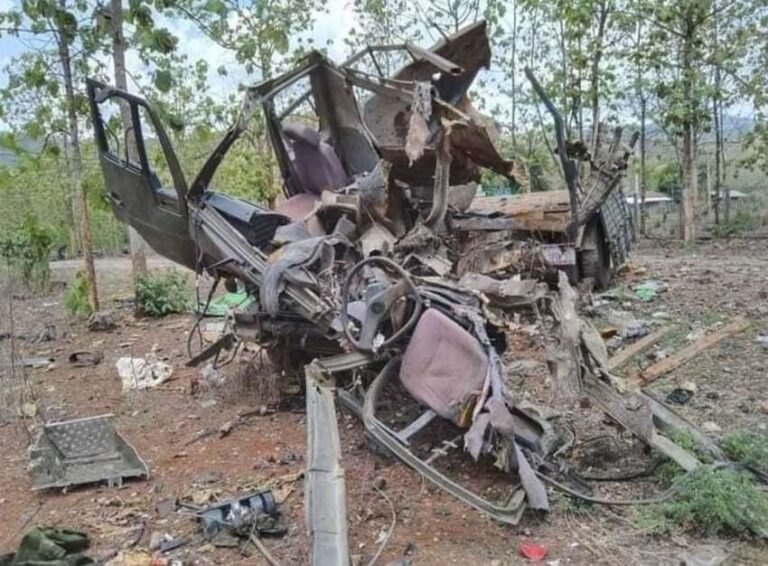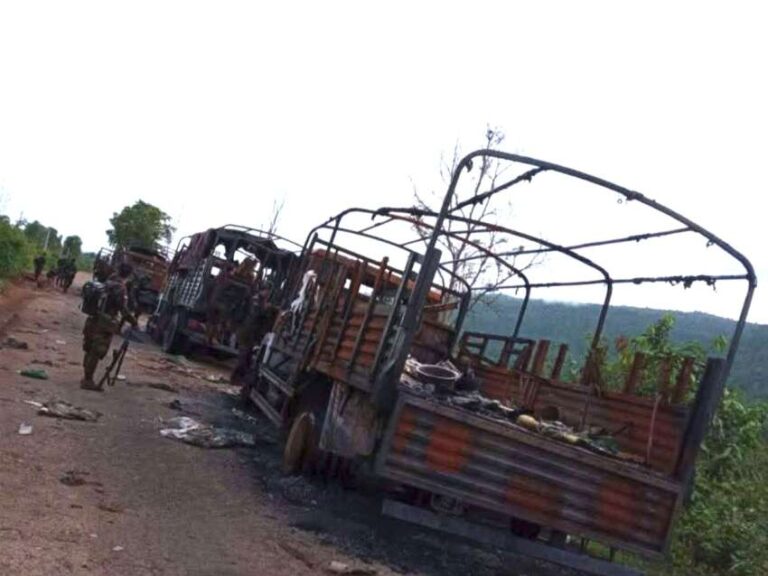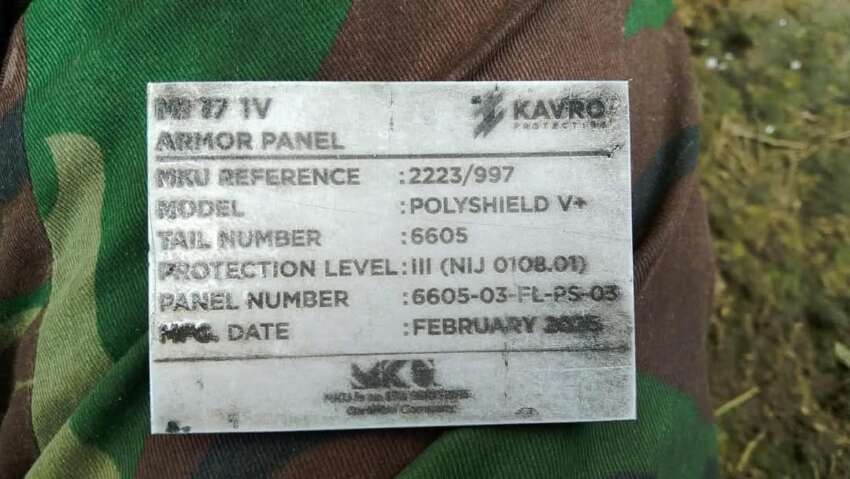
The Kachin Independence Army (KIA) shot down a military council helicopter on May 20, which was found to be equipped with Indian-made ballistic protection, according to an analysis by Tactical Raptor 2.0, which regularly reports on weapons assessments. The Mi-17 helicopter that crashed in Shwegu Township was confirmed to have MKU-manufactured ballistic protection installed, as evidenced by markings found on the aircraft. These protective elements were not weapons but rather Indian-manufactured ballistic protection solutions installed in the Russian-bought helicopter’s cabin interior.
The Indian company MKU produces ballistic protection solutions under the KAVRO brand and night vision equipment under the NETRO brand. KAVRO manufactures military helmets, ballistic plates, and armor solutions for various land, sea, and air military vehicles. The company’s website advertises ballistic protection solutions and armor plates available for various helicopters, including the UH-60 Black Hawk, CH-47 Chinook, Mi-17, and Mi-8. The manufacturing date of the equipment installed in the crashed helicopter was marked as February 2025, indicating that these protective elements were recently installed in the downed Mi-17.
This discovery further highlights the close relationship between the military council and the Indian defense industry. India’s involvement in Myanmar’s political situation has become increasingly apparent, following a pattern similar to China’s intervention. On May 14, Indian border guards arrested, killed, and returned the bodies of 10 revolutionary fighters from the Tamu People’s Defense Force. The National Unity Government (NUG) has called on India to investigate and take action regarding this incident. When retrieving the bodies of the fallen fighters, the NUG representatives were pressured to sign an agreement acknowledging that the PDF members were neutralized after entering Indian territory and agreeing not to protest against border fencing activities.
The incident demonstrates the growing complexity of regional relationships and their impact on Myanmar’s ongoing conflict. The discovery of Indian-made equipment in military council aircraft, combined with recent border incidents, suggests a deepening involvement of India in Myanmar’s internal affairs. This development adds another layer to the already complex situation facing resistance forces in their struggle against the military council, while also highlighting the international dimensions of the conflict and the challenges faced by revolutionary forces in dealing with neighboring countries’ policies and actions.
